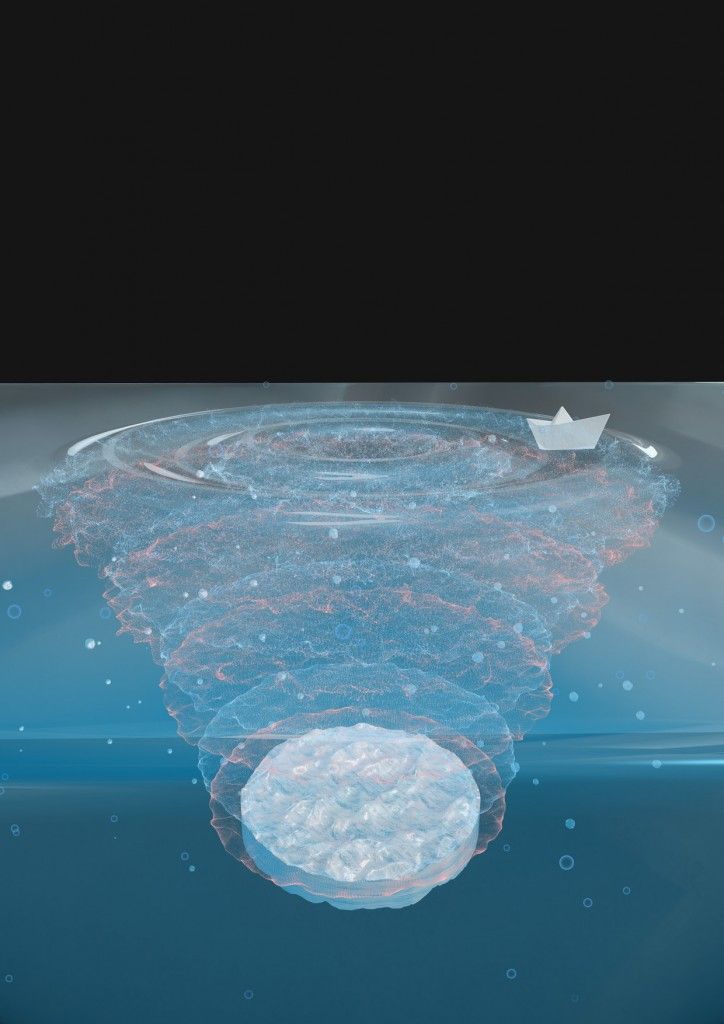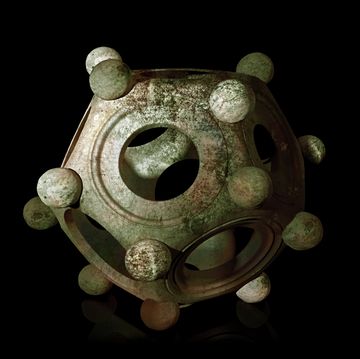This device can push, pull, and manipulate objects through air or water using only the power of sound. It's like having a pair of acoustic tweezers, and it costs less than $10 to make.
Engineers led by Kai Melde at the Max Planck Institute for Intelligent Systems in Stuttgart, Germany just developed a fascinating new way to use sound to manipulate matter. As Melde and his colleagues explain in a paper in the journal Nature, their device is almost absurdly simple. It's made out of three parts; a thin brass plate, a cheap speaker (the kind in a watch alarm), and a 3D-printed plastic disk.
"We were genuinely surprised that nobody had ever thought of this before," Melde told Popular Mechanics.
Acoustic Tractor Beam
The concept itself is not new. Last October, for instance, a team of Spanish engineers developed the first acoustic tractor beam that works from just one side. That tractor beam looked like an array of tiny speakers, and it could pick up, levitate, and whimsically twist and twirl small objects like plastic pellets.
To imagine how this works, it actually helps to picture the technology in terms of holograms. The scientists could angle their dozens of speakers and precisely time each ultrasonic pulse to create complex and beautiful interference patterns of noise. Essentially, they were painting hologram-like 3D shapes of sound into the air.
To levitate an object like a plastic pellet, the scientists behind last year's invention would use their array of speakers to paint a bottle-shaped pattern of noise around the object. The sides, bottom, and lid of the bottle shape are where the air is jittery and resonant with ultrasonic pulsations. Inside of the bottle, the air is more-or-less silent.
Here's where it gets a bit tricky: Because objects will move from highly resonant air to quieter air, an object like a plastic pellet, when it has this acoustic bottle painted over it, will be forced inside the bottle and trapped there. By angling the speakers and thus moving the bottle, the researchers can move the trapped object through the air.
Melde says last year's breakthrough was a brilliant technological step forward, but it was absurdly expensive to create and use. That's because that acoustic tractor beam required dozens of carefully-tuned and controlled speakers which were being constantly calculated and angled by an attached computer.
Less than $10
Melde's ingenious idea was this: What if, instead of using dozens upon dozens of speakers to make the exact sound-shape you wanted, you used just one?
How would this work? Instead of making acoustic shapes in the air by timing the pulses from different speakers, you would use a filter over a single speaker. Theoretically, it could create the same pattern.
The team settled on using plastic because it can precisely shape any sound moving through it, depending how thick the material is at different places. It wouldn't even be that hard to make. Using some computer software and a 3D printer, it's possible to design and 3D-print the filter so that certain parts were thicker than others and would warp the sound more or less, depending on what was needed.
Melde and his colleagues tested the idea with a cheap speaker, their printed plastic filter, and a thin brass plate to keep the whole device stable. Together, all three components cost less than 10 bucks, and "it worked even better than we hoped," Melde says. The filter created an sound-like hologram that had far more resolution and detail than you could achieve with an array of speakers. "You would need literally tens of thousands of [speakers] to create the same hologram," he says.
Still, Melde's super-cheap acoustic tweezers have two major downsides. The first problem is that because he's not angling and moving his single speaker, he's able to project only a stationary image of sound. The upshot: While he can push, pull, and manipulate objects to the exact place that he wants them, he can't move them around on a whim once they're there.
Secondly, because Melde isn't using multiple speakers at different angles, he's only able to project a sound shape in two dimensions. That means his acoustic tweezers act a bit more like a highly-detailed projector than a hologram generator. For now, his device is best at organizing and moving objects on a 2D plane, like the surface of water or a desk. In his paper, Melde showed that he could suspend drops of water in the air, but only at a specific height. He also was able to organize floating particles in water to form a painting of a dove.
Melde says he's currently investigating if he can create 3D sound holograms in the future with just two of his speakers, each slightly angled and with their own plastic filter. And even with the limitations, he sees some other pretty interesting applications for his device right now.
"There's already a wide variety of ultrasound-based medical therapies where ultrasound is used to stimulate tissue to regrow, like strained muscles, for example. I think you could use this technology to create really simple, but personalized devices—like patches—that stimulate a precise pattern of muscle based on whatever a doctor has prescribed."














